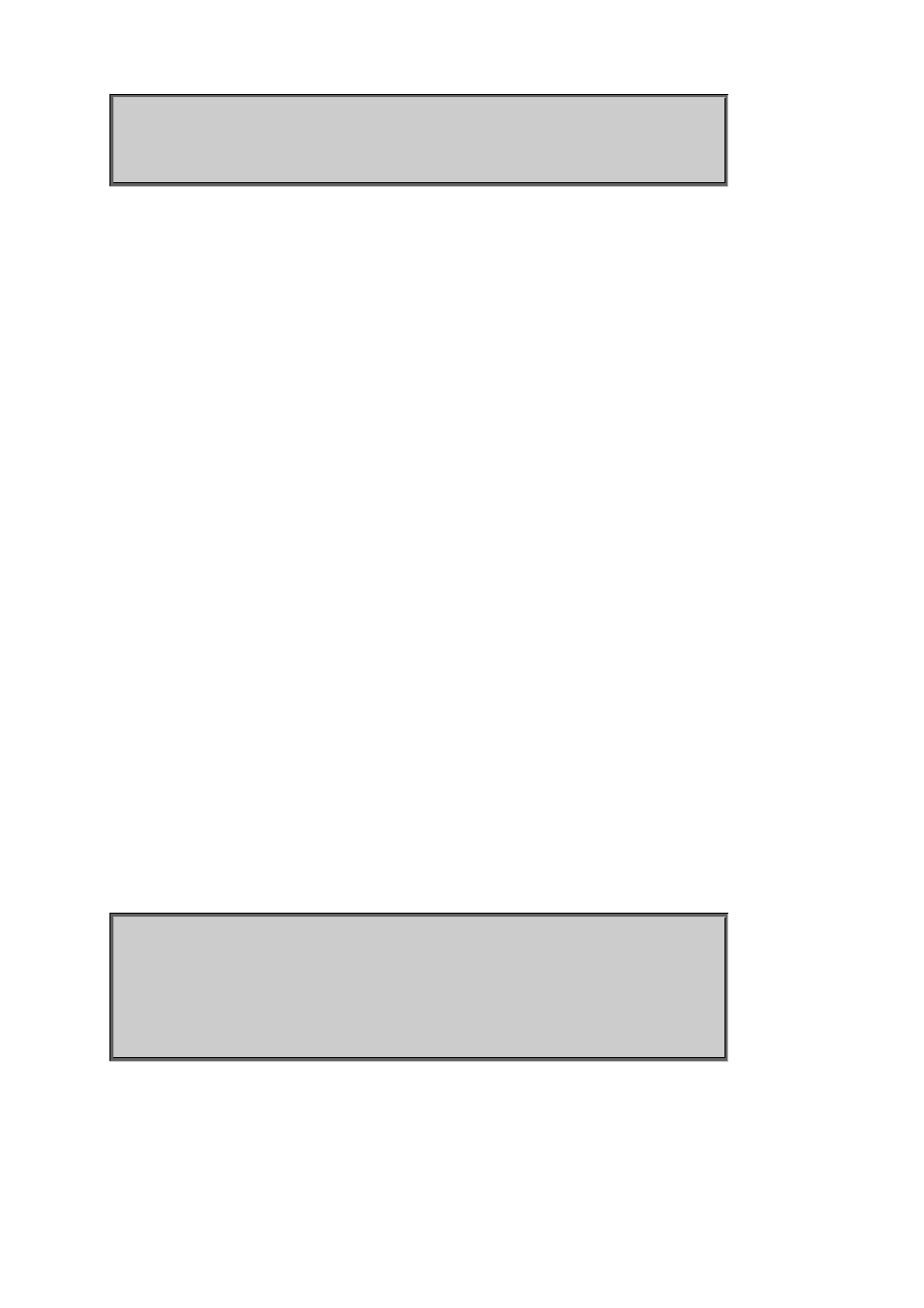Policy-map, Class – PLANET SGSD-1022 User Manual
Page 640

User’s Manual of SGSD-1022 / SGSD-1022P
SGSW-2840 / SGSW-2840P
Console(config)#class-map rd_class#3 match-any
Console(config-cmap)#match access-list test-packets
Console(config-cmap)#
policy-map
This command creates a policy map that can be attached to multiple interfaces, and enters Policy Map configuration mode. Use
the no form to delete a policy map and return to Global configuration mode.
Syntax
[no] policy-map policy-map-name
policy-map-name -Name of the policy map. (Range: 1-16 characters)
Default Setting
None
Command Mode
Global Configuration
Command Usage
• Use the policy-map command to specify the name of the policy map, and then use the class command to configure
policies for traffic that matches criteria defined in a class map.
• A policy map can contain multiple class statements that can be applied to the same interface with the service-policy
command.
• You must create a Class Map before assigning it to a Policy Map.
Example
This example creates a policy called “rd_policy,” uses the class command to specify the previously defined “rd_class,”
uses the set command to classify the service that incoming packets will receive, and then uses the police command to
limit the average bandwidth to 100,000 Kbps, the burst rate to 1522 bytes, and configure the response to drop any
violating packets.
Console(config)#policy-map rd_policy
Console(config-pmap)#class rd_class
Console(config-pmap-c)#set ip dscp 3
Console(config-pmap-c)#police 100000 1522 exceed-action drop
Console(config-pmap-c)#
class
This command defines a traffic classification upon which a policy can act, and enters Policy Map Class configuration mode. Use
the no form to delete a class map and return to Policy Map configuration mode.
640